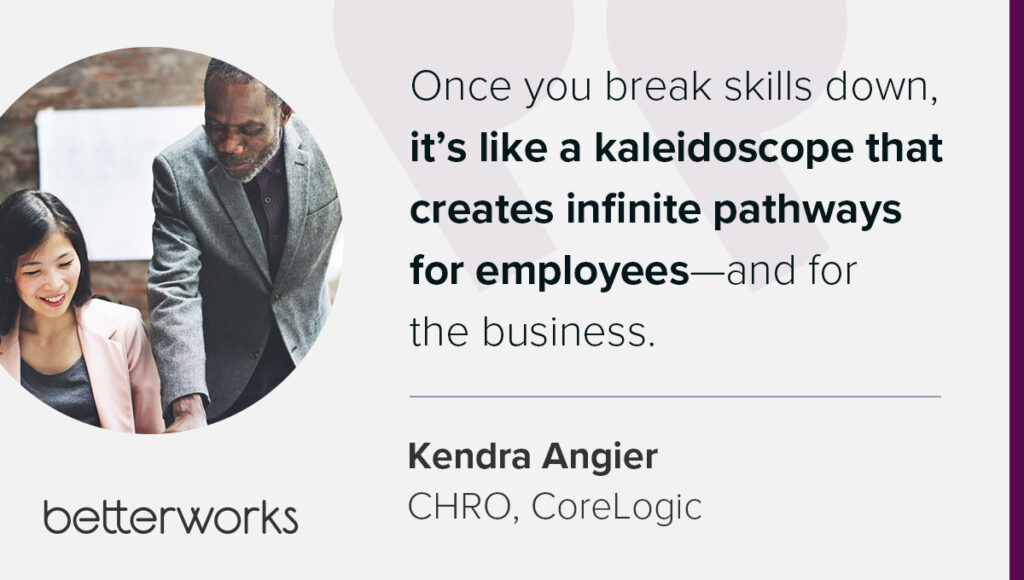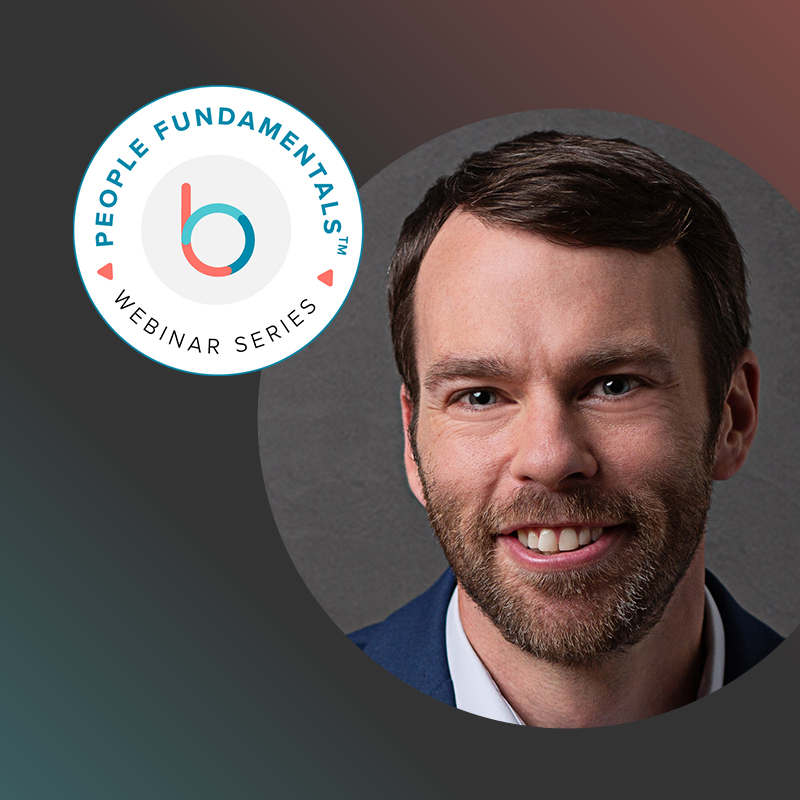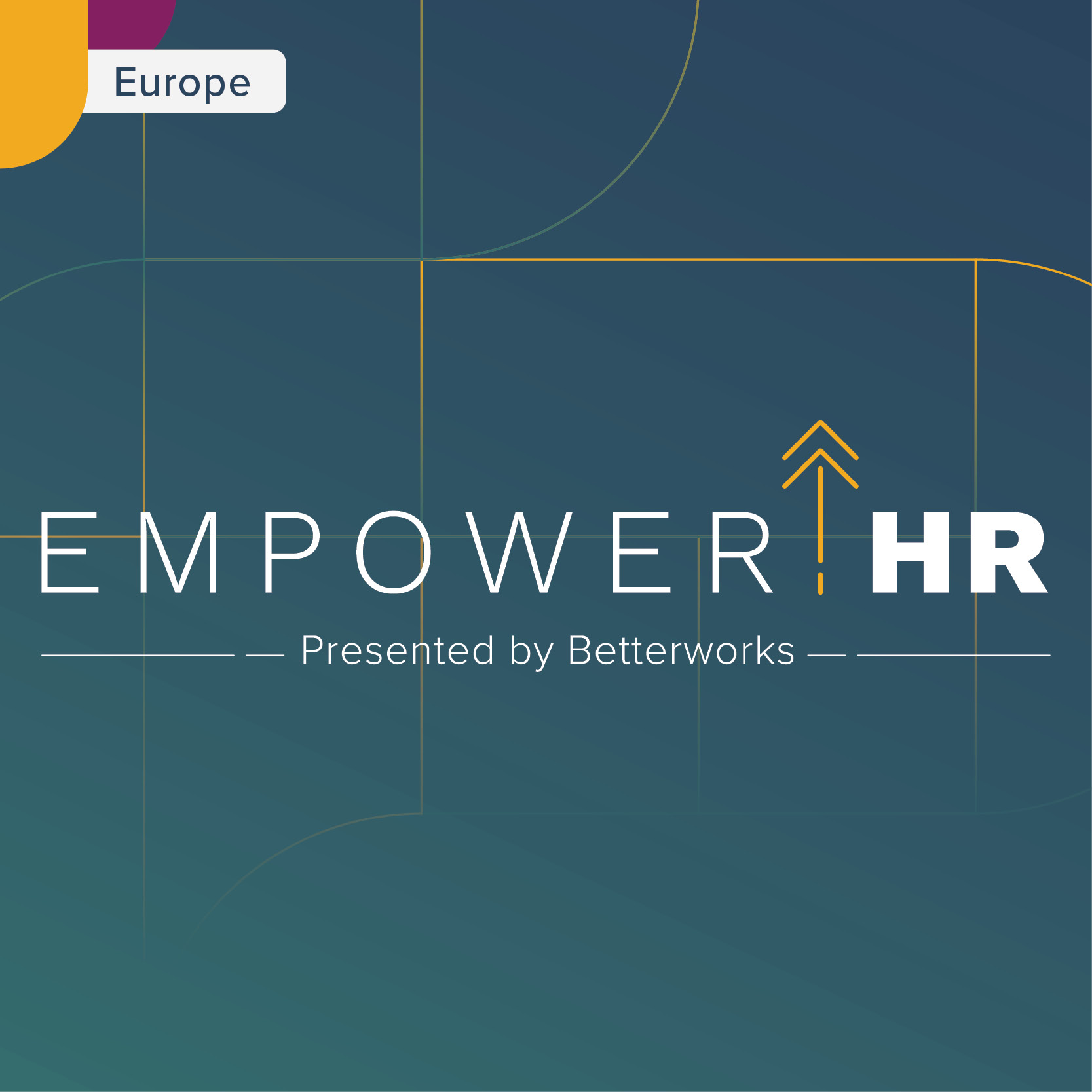You can spend months designing the perfect skills taxonomy. But when the frameworks are finished and the spreadsheets filled, one question still remains: What will you do with the data?
That’s the question driving Vidya Krishnan, chief learning officer at Ericsson, and Kendra Angier, chief human resources officer at CoreLogic. In a panel discussion at EmpowerHR 2025, moderated by RedThread Research co-founder and principal analyst Dani Johnson, they discussed what it really takes to build a skills-first strategy—one that supports business agility, workforce mobility, and employee growth.
Together, they made one thing clear: skills strategies don’t succeed because you define them. They succeed when they’re fluid, people-led, and grounded in the realities of business.
Start with strategy, not spreadsheets
At Ericsson, managing skills as a static asset doesn’t cut it. For Vidya, a skills strategy is only as powerful as its connection to business execution.
“If you have a strategy and you don’t have the skills in your workforce to execute it, that’s a daydream,” Vidya said. “If you have a bunch of skills in your workforce that are not united and mobilized by a strategy, that’s a nightmare.”
To make skills actionable, Ericsson connects strategy to execution through a process they call “skill sensing.” This annual exercise identifies emerging and eroding skill areas and is co-led by HR, the CTO, and business strategy leaders—not HR alone. “Our skills are connected,” Vidya explained. “They’re almost a derivative of our corporate strategy, and that’s why they go hand-in-glove.”
Kendra is taking a similarly fluid approach at CoreLogic. Her team started with a taxonomy and a global job architecture, but they’re already moving beyond static role definitions. “Once you break skills down, it’s like a kaleidoscope,” she said. That creates infinite pathways for employees—and for the business.

Don’t overlook the ‘power skills’ that enable agility
Both leaders are clear: the most valuable skills in today’s workplace aren’t just technical—they’re human. But these skills are also hardest to define, develop, and measure, which is why most organizations don’t prioritize them.
At CoreLogic, that’s changing. “The functional skills are getting overshadowed by the professional and the higher level skills,” Kendra said. This shift excites her because she sees that’s where real influence and adaptability come from.
Kendra described how her teams are building fluency in areas like systems thinking, decision quality, and prompt generation—skills that cut across roles and functions and provide a solid foundation for agile, AI-augmented work.
Vidya calls these “power skills.” and she sees them as mission-critical. “They either empower or disempower every other kind of skill you’re going to have,” she said. Some of the highest-value human skills are deeply interconnected with technical skills. “We still take the view that we need a mix of techno-commercial power skills, even skills of resilience and well-being.”
At Ericsson, these human-centered capabilities aren’t developed through courses alone. They’re built through a credential system that evaluates employees through hands-on projects and real-time application. “Once you earn the qualification, we give you a digital credential … The digital credential becomes the signal of how many people we have at what level in what skill,” Vidya said.

Skills mean nothing if people can’t move with them
Collecting skills data is only the first step. What matters most is how employees—and the business—benefit from that intelligence.
For CoreLogic, the goal is clear: enable 35% talent mobility across the organization. “One in three people in any given time period have some sort of movement … That’s measurable because we can tie it to people, performance, length, and role,” Kendra said.
At Ericsson, mobility is deeply embedded in the skills system. Employees earn credentials that unlock access to projects, opportunities, and new roles—regardless of their official job title.
Vidya compares the shift in how we manage skills to changes in how we shop. “I used to be so fond of receiving the Ikea catalog every winter and thumbing through it,” she said. “That used to be our job architecture. It was flat files with these beautiful descriptions that never really got updated more than once a couple of years. And we don’t shop like that anymore.”
Kendra is building toward that kind of vision too. “I want a system that will say, ‘Hey, Kendra, you’re here. And based on your skills and your interest and what all the other people in the organization are doing, these are your infinite possibilities,’” she said.
A skills strategy can’t be a one-off initiative. It must become a system that runs regardless of budget cycles, org charts, or leadership changes. One that measures, qualifies, and activates skills in real time.
Vidya and Kendra’s stories show that skills matter most when they create motion—inside careers, inside organizations, and across business priorities.
Want to learn more? Catch EmpowerHR 2025 on demand.
Learn how your peers are connecting skills to strategy










